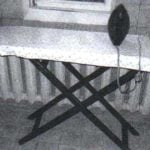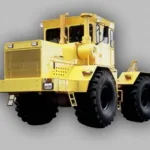Many races have shown that the catamaran has a greater top speed compared to a trimaran, especially courses on “full wind” and “galfvind”, although it is less fun in light wind (less than 1.5—1 m/s).
When driving at moderate and strong wind right wingman catamaran away from the soda and the windward float and dramatically accelerates. This traffic pattern is not available for trimaran, which is in a similar situation falls on the leeward outrigger.
All are shown in the figures the model is laminated of fiberglass on epoxy resins. Housing bezsensowne, which enables to obtain undistorted lines. This is important since PA high speed slightest irregularity of shape increase the resistance, and this inevitably affects the outcome of a race. The surface buildings are carefully polished. The rotary mast, carbon fiber is laminated on the balsa Borno. Their forming in a metal matrix. Dacron sails made of fabric with a specific weight of 90 g/m2. Beams that connect the housing, the metal tube (D16T, pipe 14X1) Axis rudder — wire-“silverfish” Ø4 mm, and Vertov — OVS Ø6 mm. Kinematic control models are shown in figure 5.
Fig. 4. Trimaran design And Osipova, and V. Ivanov (Voronezh); the square sails 7420 cm2, weight of 8.5 kg.
Fig. 5. Kinematic scheme management models:
1 — management of vertumn models SU20 and SU22, 2 — rudders on the model SU20, 3 — the steering on the model SU1252, 4 — the steering on the model SU22, RM — servo.
Since 1982 Kazan athletes began to be widely used shaped sails, welded with ultrasound. It is possible to obtain 25% increase in thrust at the weak and moderate winds, which is very important for Multihull models with considerable wetted surface of the hull
Comparing the latest domestic designs mnogoyarusnyi abroad, it can be concluded that although the latter are close in their dimensions to models of class F5-X 0.75 m2, but have a number of features. In particular, the model of American athletes are loaded with rigid sails with slats, and English, although use of the weapons type “Bermuda sloop”, but not in the classic and modernized look, with wide (with an area of up to 40% sail grotto) aerodynamic mast. Managed Vertov and automatic control system of parks they are, as a rule, are not used
In conclusion, I would like to draw the attention of those who want to try their hand at building a Multihull yacht for sailing vessels require highly meticulous workmanship, setting, and prolonged exercise on driving techniques of different winds. The fact that when the acceleration rapidly changes speed and direction apparent wind. This leads to increase in comparison with the single boat loads on the mast and hull that can not be ignored in the design process and in training.
I. GOLOVIN, master of sports of international class, Kazan
Recommend to read
 FOR CONVENIENT IRONING
FOR CONVENIENT IRONING
In our time, the stores sold a variety of Ironing boards: however, Chinese production is fragile, domestic - heavy, Western - honey. In the end, the whole family did my Ironing Board... TRACTOR KIROVETS-700A
TRACTOR KIROVETS-700A
Farm tractor Kirovets K-700A. Scale model 1:32. The purpose tractors - agricultural works with mounted, semi-mounted and trailed machines and transport, some excavation and reclamation...
 The appearance on the competition models of sailing catamarans and trimarans was the natural result of the development of a very interesting class of ship models — radio-controlled yachts. First I gotorussia was built in our country in 1974 almost simultaneously by three athletes from Kiev, Valeriy Bondarenko, a Muscovite Valery Efimov and the author of this article. All mini yachts was created on the basis of requirements for models of class F5-S (with an area of 0.5 m2 sail). The best results showed catamarans. In the future, on the basis of their group Kazan modelers have worked a few designs, which already could compete with the traditional single-hulled yachts with moderate wind and have a distinct advantage with strong.
The appearance on the competition models of sailing catamarans and trimarans was the natural result of the development of a very interesting class of ship models — radio-controlled yachts. First I gotorussia was built in our country in 1974 almost simultaneously by three athletes from Kiev, Valeriy Bondarenko, a Muscovite Valery Efimov and the author of this article. All mini yachts was created on the basis of requirements for models of class F5-S (with an area of 0.5 m2 sail). The best results showed catamarans. In the future, on the basis of their group Kazan modelers have worked a few designs, which already could compete with the traditional single-hulled yachts with moderate wind and have a distinct advantage with strong.
